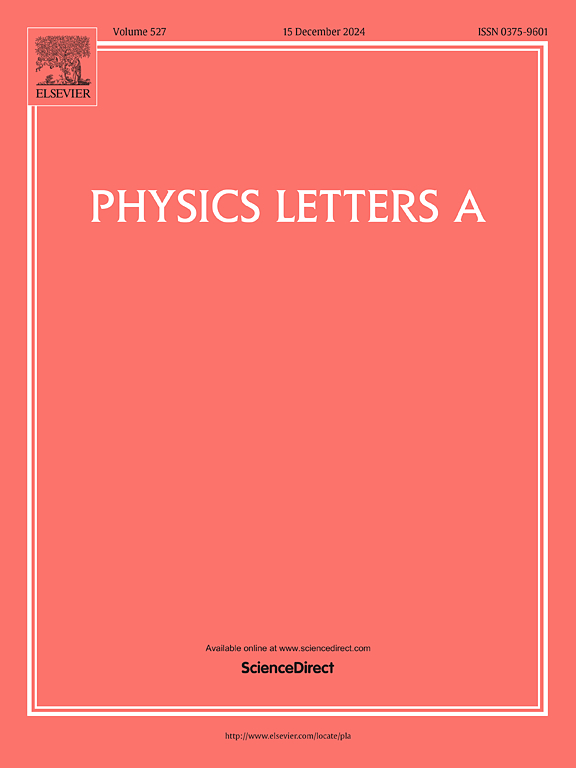The effect of ion rotational flow on Hall thruster azimuthal instability via two dimensional PIC simulations
IF 2.6
3区 物理与天体物理
Q2 PHYSICS, MULTIDISCIPLINARY
引用次数: 0
Abstract
Previous experimental studies have found that the neutral gas rotational flow in the reverse direction of electron Hall drift can lead to better experimental results comparing to the same direction. In Hall thrusters, the core factor influencing operational states is the electron cross field transport, where the azimuthal instability serves as a key mechanism. The rotational flow of neutral gas may affect instability by altering initial azimuthal velocity of ions, which has not been investigated before. Therefore, to study the effects of ion rotational flow of varying magnitudes and directions on azimuthal instability, simulations are conducted in this work based on two benchmark particle-in-cell (PIC) cases: the azimuthal-axial and the azimuthal-radial. The results indicate that the ion rotational flow velocity can potentially complicate the coupling characteristics of the electron cyclotron drifting instability (ECDI) and the modified two stream instability (MTSI), particularly when a reverse rotational flow velocity is added. In general, both co-directional and reverse ion rotational flow have been observed to inhibit azimuthal instability, which results in a decrease in axial electron mobility. A 1% addition of the ion rotational flow (compared to the electron drift) would result in a 10% change of the electron mobility due to varied azimuthal instability, and the decrease in electron mobility of the reverse ion rotational flow is greater than that of co-directional. In addition, detailed spectral analyses are carried out to study the relation between ECDI, MTSI, and resonant wave-wave interactions.
离子旋转流对霍尔推进器方位不稳定性的影响
以往的实验研究发现,与电子霍尔漂移方向相反的中性气体旋转流动比相同方向的实验结果更好。在霍尔推力器中,影响运行态的核心因素是电子跨场输运,其中方位不稳定性是关键机制。中性气体的旋转流动可能通过改变离子的初始方位角速度来影响不稳定性,这在以前的研究中尚未得到证实。因此,为了研究不同大小和方向的离子旋转流对方位角不稳定性的影响,本工作基于两个基准的粒子池(PIC)情况:方位轴向和方位径向进行了模拟。结果表明,离子旋流速度可能会使电子回旋漂移不稳定性(ECDI)和修正两流不稳定性(MTSI)的耦合特性复杂化,特别是当加入反向旋流速度时。一般来说,共向和反向离子旋转流动都被观察到抑制方位角不稳定性,从而导致轴向电子迁移率的降低。与电子漂移相比,离子旋转流每增加1%,由于方位不稳定性的变化,电子迁移率就会发生10%的变化,而反向离子旋转流的电子迁移率下降幅度大于同向离子旋转流。此外,还进行了详细的频谱分析,研究了ECDI、MTSI和共振波波相互作用之间的关系。
本文章由计算机程序翻译,如有差异,请以英文原文为准。
求助全文
约1分钟内获得全文
求助全文
来源期刊

Physics Letters A
物理-物理:综合
CiteScore
5.10
自引率
3.80%
发文量
493
审稿时长
30 days
期刊介绍:
Physics Letters A offers an exciting publication outlet for novel and frontier physics. It encourages the submission of new research on: condensed matter physics, theoretical physics, nonlinear science, statistical physics, mathematical and computational physics, general and cross-disciplinary physics (including foundations), atomic, molecular and cluster physics, plasma and fluid physics, optical physics, biological physics and nanoscience. No articles on High Energy and Nuclear Physics are published in Physics Letters A. The journal''s high standard and wide dissemination ensures a broad readership amongst the physics community. Rapid publication times and flexible length restrictions give Physics Letters A the edge over other journals in the field.
 求助内容:
求助内容: 应助结果提醒方式:
应助结果提醒方式:


